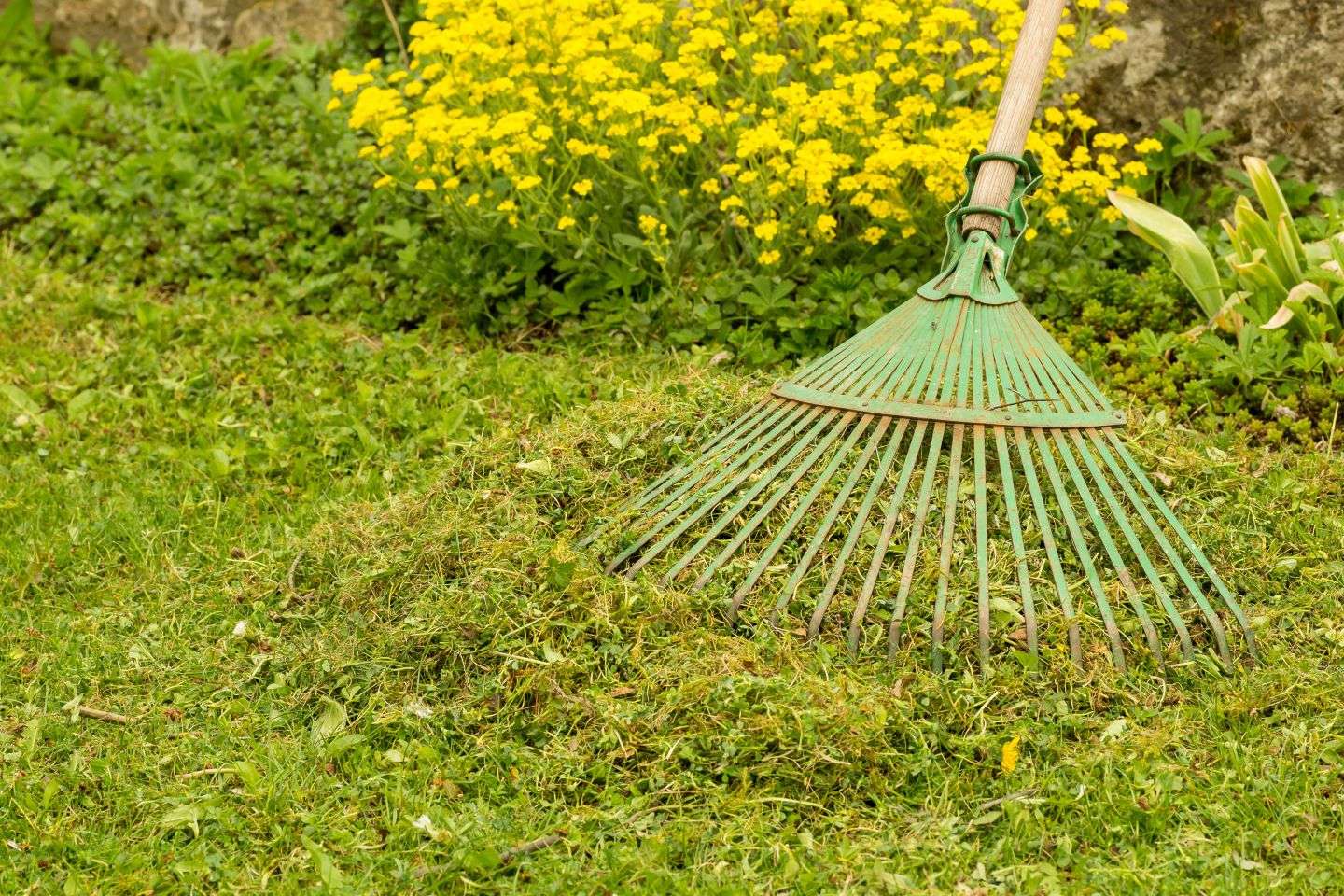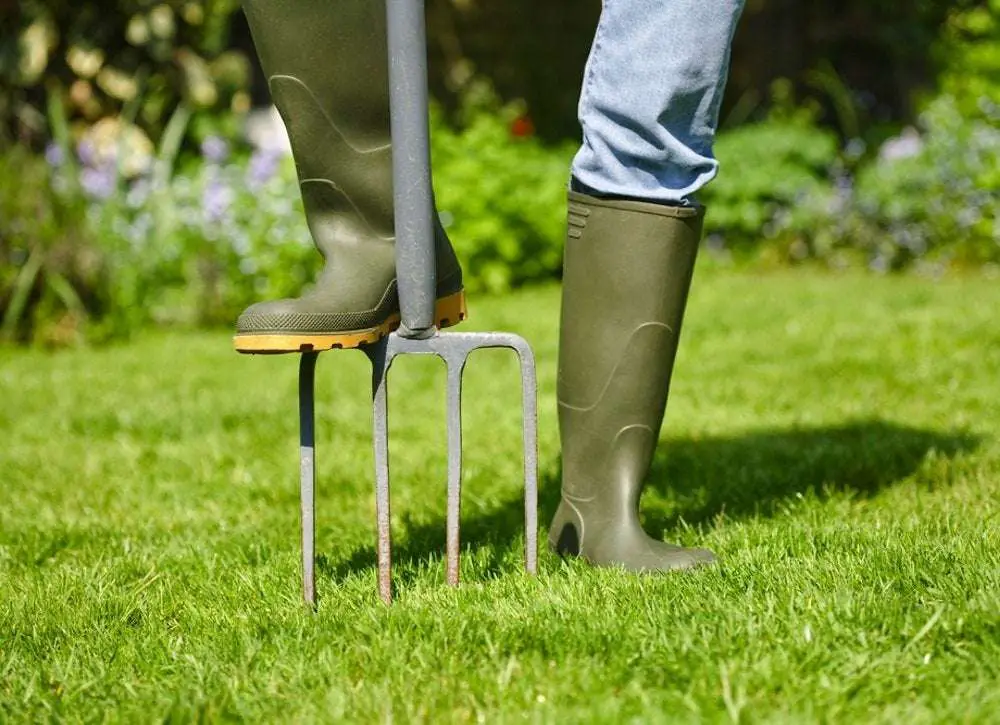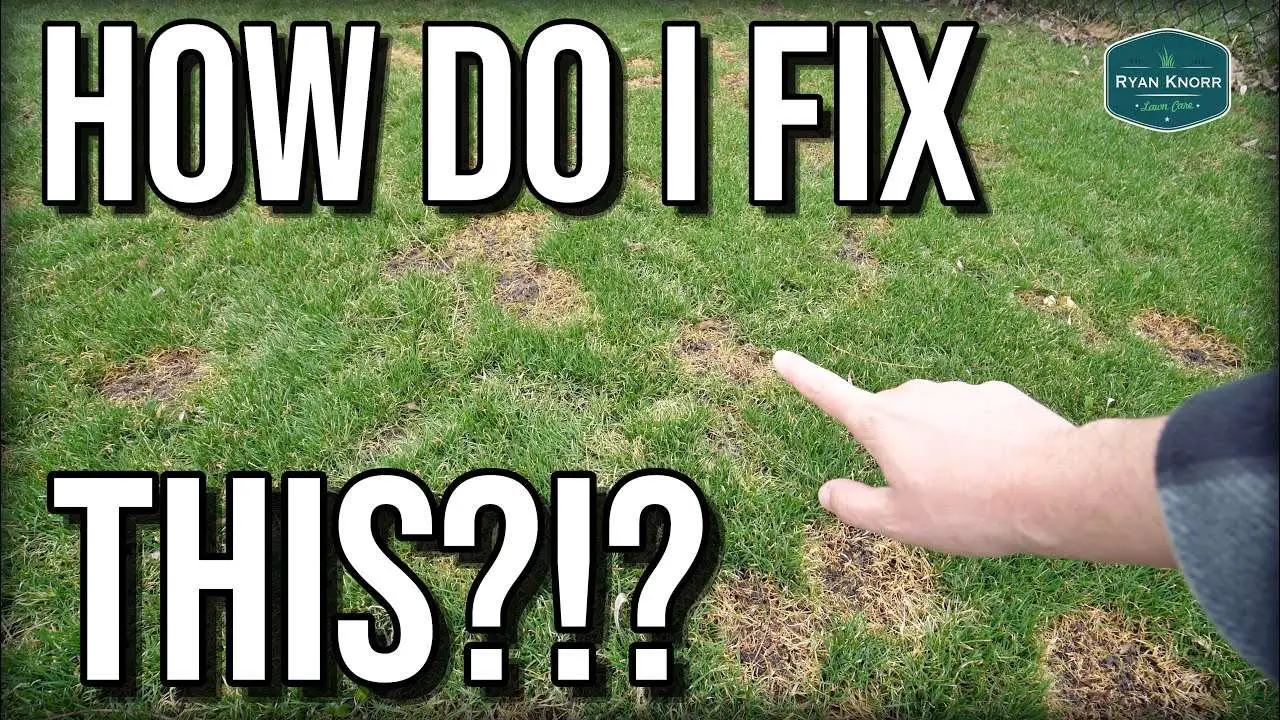Spring Lawn Care Tips To Revive Your Yard
Spring lawn care is as much about undoing what went on during the winter as it is about welcoming the April showers and May flowers. Dont be surprised if parts of your lawn especially in low-lying areas are dead on arrival this spring.
Snow acts like a cover, but ice is bad for turf, says Chris Lemcke, technical director of Weed Man USA lawn care. Ice freezes plant cells and crushes blades and leads to death.
Freeze-thaw-freeze conditions are even worse for turf roots, which can become brittle and die. Road salt also is bad for lawns. The turf near streets and along driveways and paths may need resuscitation or replacement when spring grass should be greening up.
Dead or sleeping?
When snow and ice melt, your late-winter turf starts awakening from hibernation and changes from brown to green. If your lawn dies, it wont change color.
The best way to see if your lawn is dead or sleeping is to tug the brown areas. If the turf comes up easily, the roots have failed and the grass is dead. If theres resistance, then theres hope.
How to bring a lawn back
When is the right time to bury your dead lawn grass, roots, clinging soil in a compost pile and start growing new grass?
Dead patches of lawn are easy to pull up because no roots bind the turf to the soil. Cut around dead areas with a spade, then yank up the patch.
Then its time to reseed.
1. Scatter seed on soil and lightly rake it in.
3. When seed germinates, water deeply.
Spring lawn care is preventative, too
How To Revive Dead Or Dying Spots In Your Lawn
If your lovely green lawn has slowly turned yellow or brown this summer, dont worry! There are several things you can do to revive a dried lawn. Whether its from the intense heat were seeing in San Diego, or youve left your lawn to care for itself to go on vacation, coming home to a dried and unappealing lawn doesnt have to be permanent.
When exposed to extreme heat, extended cold, or minimal water over a period of time, grass begins to dry, recede, and eventually die if proper growing conditions arent restored.
While it may seem like the end of the road for your precious lawn, dont despair. There are ways to revive your dried lawn and make it green again. In fact, its not as challenging as it seems and just involves some extra care and planning.
Tips To Keep Your Lawn Healthy
After youve gone through the trouble and expense of reviving your dead lawn, the last thing you want is for it to fall back into less than prime conditions. This is where good aftercare comes into play and can mean the difference between a thick, green flourishing lawn and one containing dead areas in need of reviving.
Read Also: What Is The Cheapest Lawn Fertilizer
Get Rid Of Winter Weeds And Dry Blades
Dead, dry blades, fungi and moss can all build up on our lawns during the winter and extended cold spells. Snow mould in particular only rears its head during extreme weather, so watch out for that in your garden. Its time to get your wire rake out of the shed to get rid of this debris to make way for spring growth and reseeding if necessarily. Think of this raking, otherwise known as scarifying the lawn, as exfoliating your lawn of the dead cells and dirt to celebrate the spring season.
Set Your Lawn Up For Success By Slit Seeding

Slit seeders are machines used to repair lawns with bare spots or thin grass. They create closely spaced slices in the turf while simultaneously dropping in new seed. This treatment significantly increases germination rates over the traditional method of simply broadcasting the seed over the lawn. Two right angle passes are made to ensure good coverage. At the time of seeding, the lawn should have a well-balanced organic fertilizer applied. Slit seeding creates a lush, vigorous lawn in a short time.
Don’t Miss: What Is The Best Self Propelled Lawn Mower For Hills
Is It Safe To Use Chemical Fertilizers
Many chemical fertilizers are safe to use on your lawn, but make sure children and animals are kept away from it before it is absorbed.
The wind can blow the fertilizer and if it is ingested in large quantities, it can be toxic. Fortunately, once it is absorbed into the soil naturally or with the help of watering, it should be entirely safe to walk or play on. Just dont over fertilize or you may end up doing more harm than good!
About The Author
Aaron is the founder of and Essential Home and Garden. He likes to spend his spare time with his family, and doing DIY projects in the home and garden.
Pay Attention To The Soil And Its Ph
Reviving your lawn starts below the grass. Improving the soil is essential to grass health and will go a long way to prepare your garden for spring. Failure to do so would mean that your fertilizer products wont reach their full efficacy. If you didnt adjust the soil pH in late winter, the arrival of spring is the next best time to perfect your garden soil doing this in summer would require too much irrigation to keep the grass hydrated.
Ideally, your lawn should have about six inches of loose and fertile topsoil. A soil pH of 7.0 is also great for nearly all grass varieties.
One way to know how to improve the soil and adjust the pH is to have a soil test. While you can buy a soil test kit on your own, we recommend sending a soil sample to a local extension service. Youll receive a comprehensive analysis of your soil along with suggestions on how to make it fertile and better suited for the lawn grass.
Don’t Miss: What Is Rgs For Lawns
What Causes Grass To Die
Whether its your entire lawn or just patches, below are the major causes of yellow or dead grass:
- Poor preparation and installation: Properly preparing the area and installing new grass is much more than spreading seed or laying sod over the area and if done incorrectly, seed and sod wont properly grow and can eventually die.
- Cultural Practices: Keeping your lawn green and happy involves properly watering, feeding, and mowing at the proper height for the particular grass you are growing. In the turfgrass industry, these are called cultural practices. When not correctly carried out, any of them can lead to your turfs demise.
- Grass Type: Make sure the grass you are growing is hardy in your particular climate and grows in the light conditions present in your yard. Planting grass that prefers a sunny location in the shade, or using grass not hardy in your area of the country leads to its eventual death.
- Pests and Diseases: Various pests and diseases affect turfgrass, leading to weakening and possible death. Roots are especially vulnerable to grubs. You can take a sample of the affected turf to your local garden store for diagnosis or contact your local county Extension Office. Treat the pests or disease problems before installing new grass in the area.
Aerate Your Lawn In Late Spring And Early Autumn
Your lawn can becoming compacted through use and different weather conditions, which restricts the absorption of air, water and nutrients at root level.
The concept and process of aeration is simple: take a strong, long-handled fork out of storage, put on a pair of boots or wellies with thick soles and use your weight to dig the fork down into the lawn to create small holes. Leave a set of holes every two feet or so until the entire lawn has been aerated.
Your work will stimulate new growth, improve water drainage and de-compact your lawn below surface level. Timing is key: aim to aerate in late spring and early autumn, when your lawn is established but when very hot weather hasnt made the soil dry and hard to dig.
Don’t Miss: How To Kill Moss In Lawn
Why Is My Grass Dying Even Though I Water It
If you water your grass on a regular basis but still notice brown patches starting to develop, your lawn may need professional care. There are a few reasons that your grass may be turning brown. The main cause of brown grass is that the roots are no longer able to absorb moisture or nutrients from the soil. Before rushing out to resod your lawn, try to identify the cause of the problem to prevent its spread or even cure it.
Drought stress is the most common reason grass turns brown. Just like any plant, grass will have a negative reaction when there is less moisture in the soil and air paired with higher temperatures. If you pull on a patch of brown grass on your lawn and it stays firmly rooted, chances are the issue is lack of moisture. Most turfgrass will go dormant when there is not enough water or if it is too hot outside. The grass will perk back up when the temperature falls and moisture is reintroduced into the soil. Poorly placed sprinklers can also lead to brown spots on your lawn. Make sure that the reach of your sprinklers covers your whole lawn to prevent under-watered areas.
Weeds are not only bad for gardens, they can also wreak havoc on your lawn. They will compete for moisture and nutrients which can leave areas of your lawn brown or dying. A pre-emergent herbicide will help keep stubborn weeds out of your landscape. Fungus and other plant diseases are also a common cause of brown grass.
Reviving A Dead Lawn: A 7
When it comes to your outdoor space, nothing can be quite as disheartening as watching your once-green lawn turn a crispy brown and die. But reviving a dead lawn isnt as hard as you may think. If youre a homeowner, follow this 7-step plan to turn your torrid turf back into a lovely lawn.
Read Also: What Can I Use To Green Up My Lawn
Take Stock Of The Situation
Make sure your grass isnt simply dormant. Some grass types will go dormant and turn brown. Take a look at the crowns. Youll locate the crowns at the plants base. Grass blades grow from this whitish area.
Are the crowns healthy? If so, your grass is most likely dormant. On the other hand, discolored or dried out crowns mean your grass isnt going to turn green again.
Its time to put your DIY hat on after youve determined that youre dealing with dead grass.
Learn How To Restore A Lawn In Eight Simple Steps

Bare spots. Dead grass. Lawn full of weeds. Its enough to make you give up hope on ever having a beautiful green yard. But, with a little work and a few growing seasons, you can restore your yard into that plot of healthy green grass youve always wanted.
Ready to fix a weedy lawn and get your green grass back? Lets get started.
Also Check: Where Can I Buy Lawn Mower Blades
Should You Tackle Lawn Weeds In Spring
To get rid of lawn weeds, apply a combined fertilizer, weed killer, and moss killer in mid-spring.
If you would rather not use moss killers and herbicides, apply 4oz per sq m of blood, fish and bone mix monthly, from mid-spring to late summer if rain isn’t expected for two days, advises John Negus, gardening expert for Amateur Gardening. ‘This encourages grass to grow robustly and outpace the moss and weeds.’
There are steps you can take to combat weeds in your lawn
Tips To Revive Your Lawn For Spring
by Emma | Apr 6, 2018 | Gardening, Latest Posts |
Does your lawn look famished after winter? Heavy foot traffic has led to compacted soil and bent clumps of grass all around your property. Likewise, the grass doesnt look as lush and green as youd hoped. Thankfully, you can improve your lawn if you know what to do. Here are 5 tips to revive your lawn for spring.
Also Check: Who Sells Troy Bilt Riding Lawn Mowers
Dedicate To The Routine
Once you begin to see new growth, its time to perfect your routine so that you never have to deal with this again! Planning the right time to fertilize, aerate, mow, and water your grass will be imperative in your lawn care routine to keep your grass growing and green!
Mowing Routine
Especially if mowing was part of the causation of your dead lawn, pay closer attention to the best way to mow your lawn. If you love your lawn short, we have some bad news for you: a lawn that has too close of a mow is susceptible to more damage and retains less water. You can still mow your lawn short once in a while, but do not make it a habit. Keeping your lawn higher can also prevent weed growth, such as crabgrass. Your mower blades also play a role in keeping your lawn healthy and thriving. If your mower blades are dull, your mower might be tearing and ripping your grass, instead of cleanly cutting it with sharp blades. This effect will leave frayed grass behind, which is slower to heal, leaving the plant open to infection from fungal pathogens. Additionally, the frayed tips will die giving your lawn a brown tinge atop the leaf canopy. In short: frequent mowing at increased heights of cut is a great way to maintain a healthy, vigorous lawn!
Lawn Watering Routine
Adapt to Drought
Irrigate The Reseeded Areas Twice A Day
Some homeowners make the mistake of irrigating at night. They believe that the warm spring temperature means water gets evaporated before it reaches the ground. Likewise, there are people who do it due to time constraints.
While less water gets lost due to evaporation, nighttime watering also means that moisture stays far longer than necessary. Water that stays on the grass blades will expose them to lawn diseases.
Instead, you should irrigate your spring lawn in the morning. The air is relatively cool and the water wont quickly evaporate. If youre done sowing seeds in your lawn, you must water the area again at noon. Seeds need constant moisture for germination. Once summer arrives, you should stop irrigating twice a day.
You May Like: How To Treat Dandelions In Lawn
Kill Weeds And Dandelions
Weeds can spring up quickly, feeding on water or any moisture available in the ground. When you have weeds growing alongside grass, this creates a battle of survival, meaning there is less water for grass. Remove weeds by hand-pulling them out by the root or by using a tool like this Walensee Weed Puller . Similarly, knowing how to get rid of dandelions also helps keep more moisture and nutrients for the grass.
Plant New Sod Or Seed
Planting sod: Large areas of brown lawn can be filled in with full sod pieces. Use plugs or sprigs when filling in smaller sections. The key to laying down sod is to make sure each piece is fitted firmly up against its neighbor. Their root sections need to connect firmly to the soil underneath.
Planting seed: If youre going to plant from grass seed instead of sod, then evenly spread the seed across the affected area. Pay attention to getting proper contact between the seed and soil. Cover the seed with a thin layer of soil.
Recommended Reading: How To Get Rid Of Spurge In Lawn
Faq About Reviving A Dead Lawn
How long does it take to revive a dead lawn?
If a lawn is truly dead, you cant bring it back to life without reseeding or resodding. But it may not be dead. Many grass types, especially cool-season grasses, tend to go dormant in times of high heat and low water. Check out Is My Grass Dead or Dormant? to tell the difference between a dead lawn and a dormant lawn.
How long does it take to revive a dormant lawn?
With regular watering, a dormant lawn will come back to life in about three to four weeks.
Should I rake my dead grass?
Yes. You should rake your dead grass for multiple reasons. Your dead grass may just be dead thatch. Removing the dead thatch will allow air, nutrients, and water to reach your healthy lawn. Raking may reveal that not all your grass is dead. You may just need to seed parts of your lawn instead of replacing entire sections. Warning: Dont rake too much. If you do have healthy grass within the dead turf, you risk damaging the delicate blades with over raking.
How Do You Revive Dead Grass Quickly

There is no way to revive dead grass, but you can keep brown or yellowing grass from dying out. The best way to revive dehydrated grass is to offer moisture as needed. To revive a lawn that has spots of dead grass mixed in with dying grass, we have some tips. Start by raking the spots of dead grass to loosen the soil and remove the expired blades. Lightly rake the healthy areas to get rid of dying grass and aerate the soil for root stimulation. Once you have the land prepared, take a rotary seed spreader and lay down new grass seed over the dead spots. Using a lawn roller, gently press the seeds into the soil of the dead spots. Moisten the soil at regular intervals to support healthy growth. Make sure you also use a high-phosphorus fertilizer to give the grass seeds an extra boost.
Recommended Reading: What Is The Best Lawn Insecticide
